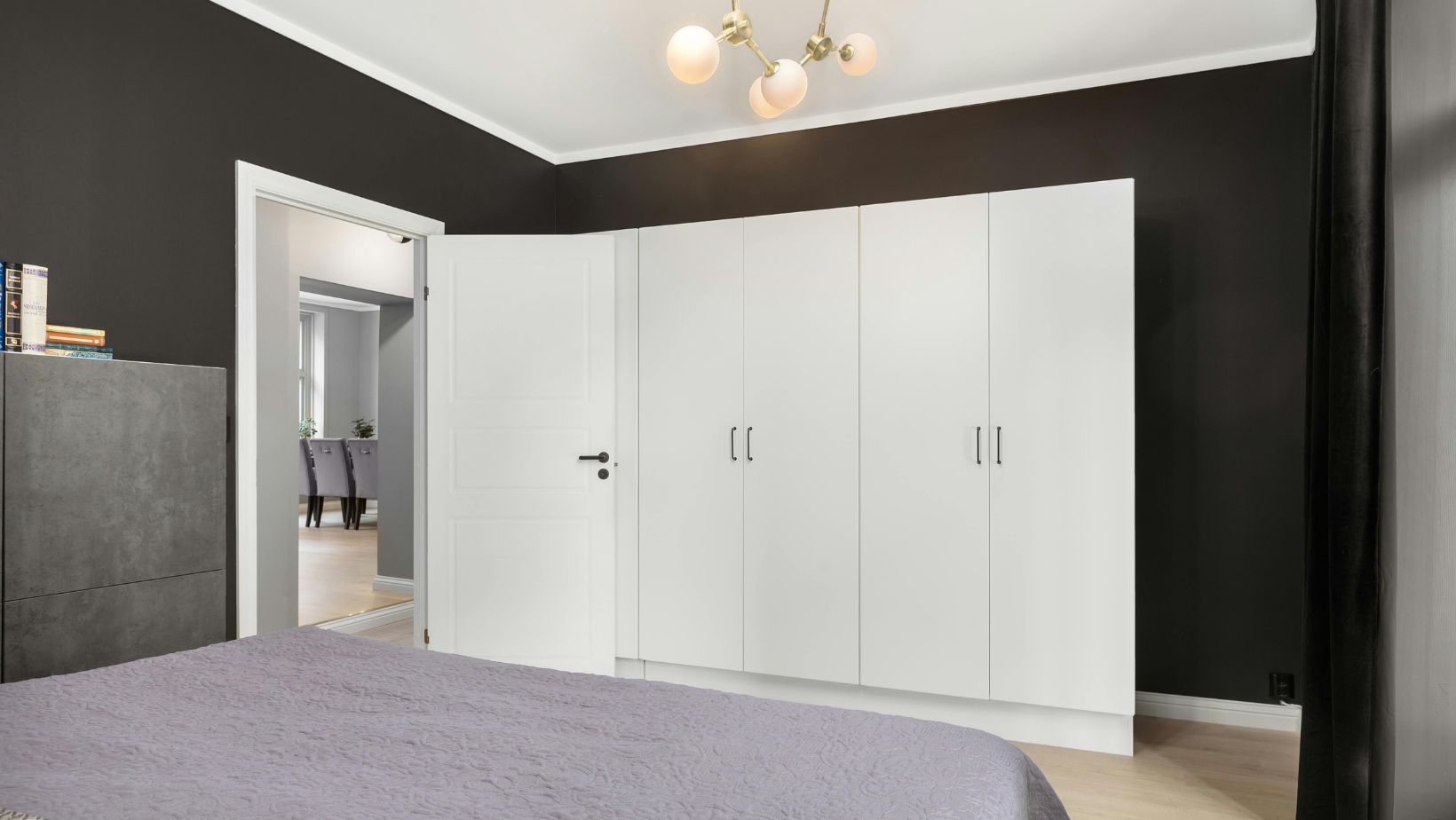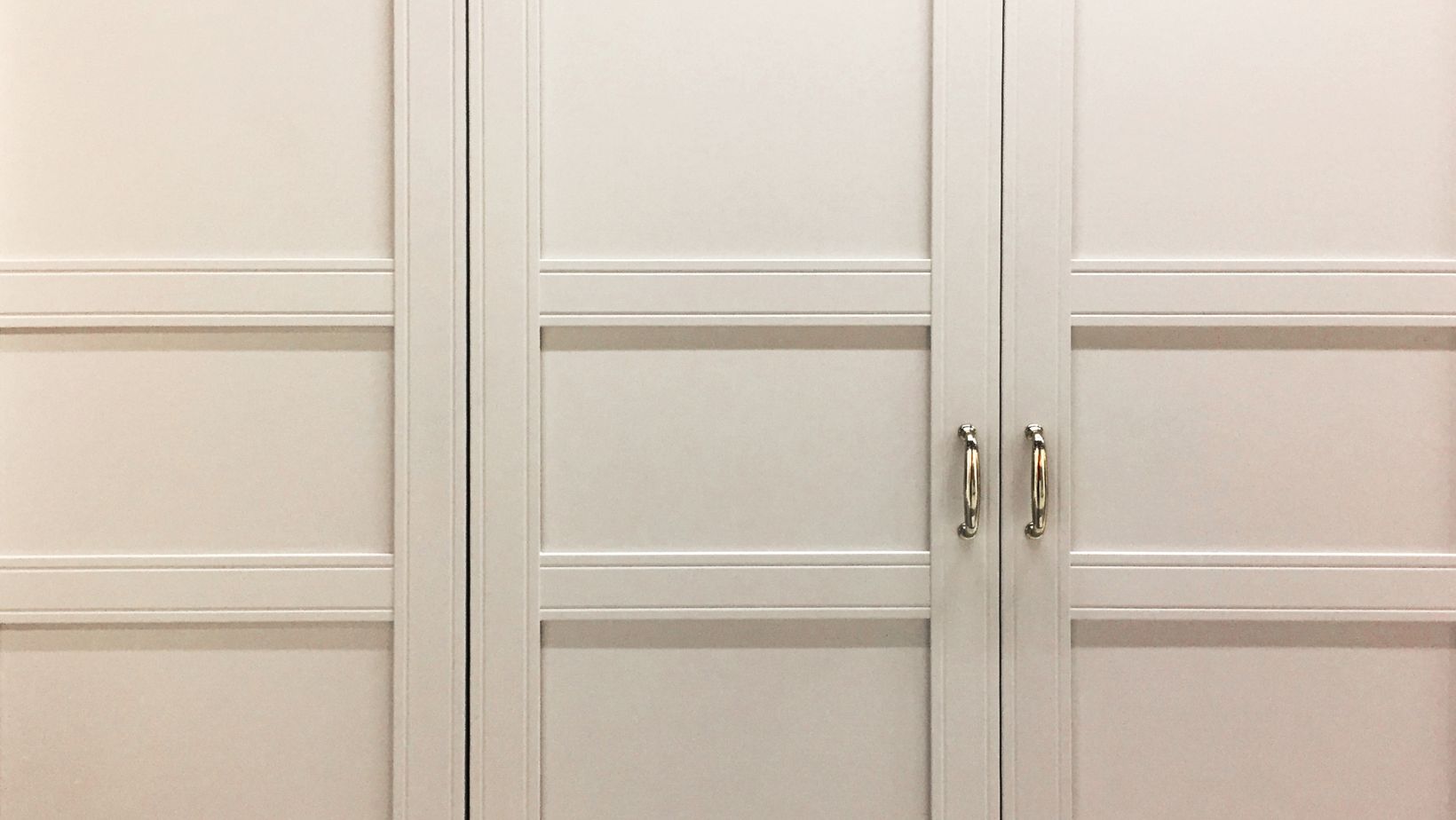
Buying closet doors seems like a simple task, but in practice, many people encounter difficulties. Poor selection often results in premature deterioration, functionality issues, and unexpected expenses for new doors. But a smart approach to selection will save time and money.
Sliding systems require special attention to detail. Aesthetic qualities are essential, but so are the technical characteristics of the guides, rollers, and fittings.
Materials: What to Choose for Durability
Material grade directly impacts both durability and visual appeal of your door system. Each option has its own performance characteristics and price range:
- Laminated particleboard — a budget option for temporary use. Suitable for rental properties or children’s rooms.
- MDF panels — the optimal balance of price and quality. Resistant to moisture and mechanical damage.
- Solid wood — a premium choice for classic interiors. Requires regular maintenance but will last for decades.
- Glass and mirrors — a contemporary approach to creating spacious visual effects. Need to be cleaned frequently to remove fingerprints.
Bypass closet doors made from high-quality materials will last much longer than cheaper alternatives. Saving on materials often results in replacement after two or three years.
Dimensions: How to Measure an Opening Correctly
Accurate measurements are the basis for successful installation. Even a small error can render the doors unusable.
Take width measurements at the upper, center, and lower sections of your doorway opening. Use the smallest value to order the doors. Also, check the height on the left, in the center, and on the right.
Standard ceiling heights require doors that are 200-240 cm high. For high ceilings, you can order doors up to 270 cm high. The width of a single door panel is usually 60-120 cm, depending on the size of the cabinet.
Common Mistakes When Purchasing
Buyers often make the same mistakes, which are easy to prevent in advance. Awareness of these common errors ensures better purchasing decisions:

- Ignoring the weight of the structure — heavy doors require reinforced guides. Standard rails cannot support heavy wooden or glass panels.
- Incorrect choice of guides — top-mounted tracks are more reliable than bottom tracks, but require secure ceiling mounting.
- Saving on hardware — cheap rollers wear out quickly and create noise when moving.
- Underestimating gaps — doors should overlap each other by two or three cm for a tight seal.
Avoiding these mistakes will guarantee long and trouble-free operation of the sliding system.
Features of Installing Different Types
Each type of sliding door has its installation requirements. Understanding these details helps you choose the right option for your space.
Top-hung systems are attached to the ceiling and do not have a bottom track. They work well with carpet installations and irregular floor surfaces. Bottom tracks are easier to install but can interfere with cleaning.
Built-in systems require precise fitting to the niche’s dimensions. External mounting systems provide greater flexibility and compatibility with various closet types.
Care and Maintenance
Regular maintenance significantly prolongs the operational lifespan of your sliding door system. Regular maintenance prevents breakdowns and keeps them running smoothly.
Clean the guides of dust and debris once a month. Lubricate the rollers with a special compound every six months. If squeaking occurs, immediately check the condition of the hardware.
Sliding closet doors are an investment in the comfort and functionality of your home. The right choice of materials, accurate measurements, and high-quality installation will ensure many years of trouble-free operation.


















